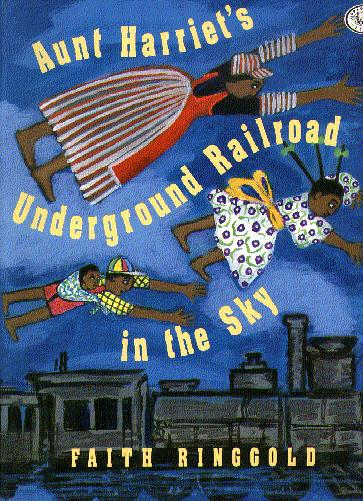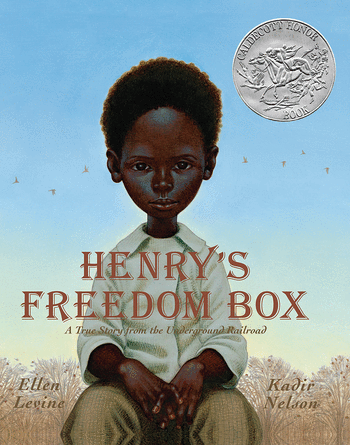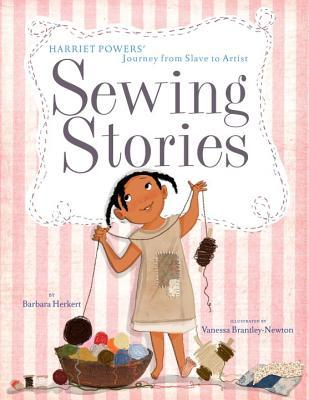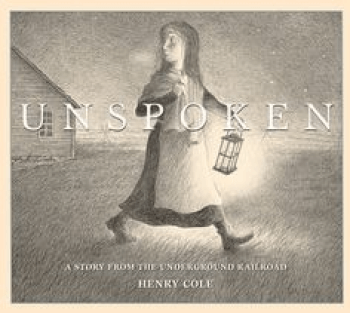Bedrock Theories of History: How Children and Adults Are Programmed to Believe
BELIEFS COME from people. They don’t just float in the air — it takes real people to transmit beliefs. And if you say that certain beliefs are incorrect, then the people who transmitted those beliefs were, for some reason, transmitting incorrect beliefs. How and why did this happen? And this article deals with the “how” of it.
The point is not to convince the reader of anything in particular; that comes later. But simply to blow the lid off. And this lid on what I will call “the main narrative of US history” was put in place at a low end (before puberty) and at a high end (after puberty).
The Low End
Let me tell you about the “Pacific Northwest Tree Octopus”
“The Pacific Northwest tree octopus (Octopus paxarbolis) can be found in the temperate rainforests of the Olympic Peninsula on the west coast of North America. Their habitat lies on the Eastern side of the Olympic mountain range, adjacent to Hood Canal. These solitary cephalopods reach an average size (measured from arm-tip to mantle-tip,) of 30-33 cm.
Unlike most other cephalopods, tree octopuses are amphibious, spending only their early life and the period of their mating season in their ancestral aquatic environment. Because of the moistness of the rainforests and specialized skin adaptations, they are able to keep from becoming desiccated for prolonged periods of time, but given the chance they would prefer resting in pooled water.”
Now this website was set up, saying this, and going into great detail about the Pacific Northwest Tree Octopus, and shown to 7th graders in Connecticut, and all 25 of them in the class fell for it. And the age of 7th graders is 12 or 13.
At age 3, about 69% of children believe in Santa Claus. At age 5, it’s 83%. At age 7 it’s 63%, at age 9 it’s 33%. But by age 12, it’s still a whopping 5%, which is one per 20 people, so in a class of 30 kids you will, on average, have 1.5 kids who still believe in Santa. But if 5% of 12-year olds still believe in Santa, the others, the ones who don’t, aren’t exactly a million miles ahead of those who do.
Which is to say, the 12-year old population still has one foot in early childhood, the kind of mind that can believe in Santa.
And those younger kids who don’t believe in Santa — that’s not necessarily a reflection of their ability to think critically. That may just be their parents or siblings telling them that Santa isn’t real.
Knowing this, it’s important to ask: what is being taught to people when they still believe in, or are very close to the kind of mind that can believe in, Santa Claus?
Of course religion is something that is brought up a lot. But of more practical significance is lessons on history. The most politically relevant history being about race:
Belief in Santa by Age and Beginning of History Topics in US Schools (Generally)
| Age | Santa Belief % | Notes |
| 3 | 69% | |
| 5 | 83% | Lessons on slavery in the United States begin |
| 7 | 63% | |
| 8 | (48%) | Lessons on racial segregation in the United States begin |
| 9 | 33% | Average start for Black males entering puberty |
| 10 | N/A | Average start for White males entering puberty |
| 11 | N/A | Lessons on the Holocaust begin |
| 12 | 5% | Tree Octopus |
| 13 | N/A | |
| 14 | N/A |
Now after one is taught these things at ages well before the brain is fully developed, this certainly is going to influence how they interpret any issue that involves White people and non-Whites. It’s done at an age where they have no context to put any of it in.
And there is a laser focus on Blacks in the US — and it is not compared to say, Blacks in Africa, or Whites in Russia, or how life was for the typical Chinaman or Indian. So these kids, not long ago toddlers, are being made to emotionally feel for the sufferings of one particular group — Blacks — at the hands of Whites.
And in adulthood, you see “White privilege” and “police brutality”. They’re taught about the desperate optimism of slaves at the time — but what about desperate optimism of White farmers who were probably less food secure than Black slaves at the time?
Each of these individual narratives both establish and reinforce a “meta-narrative” of White people oppressing non-White people. i.e. you hear about “racism in the boardroom” and that becomes “just another form of White privilege/oppression”.
And to be White is to be the oppressor in this overarching story.
So that’s the low end. Next we should look at the high end.
The High End
In any religion you have the version of the religion for children, and the version of the religion for adults. Now if someone is raised Christian, and is given Christianity for children (the low end), but is never given the more complex and reasonable-sounding arguments in adulthood (the high end), they are likely to abandon Christianity.
And Christianity, like all religions, is dependent on getting people as children, and then reinforcing the belief later in life. Adult conversions do occur, but it is much easier to get the kids. But to maintain the belief into adulthood, you need something at the high end.
The way people are persuaded about Whites being oppressive and harmful to Blacks during slavery in the US and during segregation is not based on any kind of data or statistics. If you think this is a bold claim, just think back to those lessons about slavery. Do you remember a lot of tables and charts being used? Of course not, because that’s not what they were appealing to.
They weren’t using proper evidence — they used broad claims backed up by anecdotes and descriptions of the time.
… But that’s okay, because you know that off somewhere there are these great historians who have the truth about slavery all sewn up. They know how many slaves faced corporal punishment compared to non-slaves, and they know how much slaves got to travel compared to non-slaves, etc. etc. right? They just aren’t sharing this in high school textbooks.
Now, do you think that Black slaves worked more than “free” White farmers? Of course you do. They were slaves, it was horrible, the narrative dictates that they worked harder and longer, and were whipped to boot! You probably know Toby’s personal story about it — even if it was “historical fiction”.
The first investigation of how many hours slaves actually worked compared to “free” White farmers was done in 1976 by John Olson. 1976. That’s 111 years after the end of slavery in the United States. And he found that slaves worked less than “free” Whites.
The standard narrative on slavery that you were taught dates back at least to the 1930s, and probably well before that, well before the necessary research was done. So the line on “slaves working particularly long hours” doesn’t come from any data or evidence.
Not until 2015 was there any follow-up work on how long and hard slaves worked, with two separate investigations done by Alan Olmstead and Trevon Logan, both done in 2015. Again, they found that slaves did not work particularly hard.
How about corporal punishment? The data on that simply doesn’t exist. The only reliable records that quantitatively document corporal punishment are done by Bennett H. Barrow. One guy’s records from one plantation.
But this doesn’t stop the textbook writers from pushing the corporal punishment trope, nor does it stop them from impressing upon five year olds that Black slaves worked particularly hard.
In my opinion, what happened is that the abolitionists won the propaganda war, and got their view of slavery put into the minds of the public shortly following the Civil War, and it was never really checked until very recently.
This is why the “revisionist” charge is so bizarre. First off, “revision” shouldn’t be a bad word, history should constantly be revised. But second off, they act as if there is some great empirical edifice on slavery where there is none. It’s three studies, and they go against the narrative set at age 5.
There’s no Magic in Those Bricks
As grand, old and expensive as the architecture of a University may be, and as formal as the titles and administration may be, the knowledge on a subject ultimately comes from suddenly normal people. Real people have limits, they have to teach, they go on vacations, they like their free time, and have bugaboos they seek to prove.
If you find this lack of investigation into what we think of as “basic” history shocking or hard to believe, why is that shocking? How many historians are there, and specifically, how many historians about slavery, and of those how many actually do primary research? Ten? One hundred? One thousand?
The number of people actually employed as historians is 3,500. The number of history teachers in college and junior college is around 23,650. How many of those people do any kind of primary research?
Lets be generous and say there are 30,000 people with history PhDs who work either as a historian or history teacher. This is a rough estimate based on the number of history PhDs awarded each year and what proportion of them get employed in their field.
And lets be generous again and say 10% of those do any kind of primary research, so now we’re at 3,000 research historians. Okay, how many of them deal with the history of the United States? Well, Wikipedia lists 448 historians who study the history of the United States. This includes some dead historians, but also probably doesn’t include some important ones who are still alive. So lets say there are 500 research historians who deal with the United States.
Of those, how many of them specialize on slavery? Even if a historian specializes in the United States Civil War, he is unlikely to do primary research on the plight of slaves. Well, depending on the year, slavery concerned about 15% of the US population for 89 years of the existence of the United States. So now you’re down to maybe 75 of them, at the most, probably closer to 30.
Okay, what are they researching? Even those are not necessarily researching basic narrative (set at age 5). They may be researching the role of women in slave society, or the relation between African folk traditions and Christianity in the slave camps, or something equally banal. Remember, “specialization” is the name of the game in history.
And for those who do basic research and specialize on slavery, and are investigating the basic narrative questions (living standards, work hours, corporal punishment, education) — you may be down to 15 to 30 people — they aren’t necessarily reaffirming what you were taught in kindergarten. In fact, on the whole, they aren’t.
Of course there are countless numbers of teachers teaching about slavery, and they would be concerned at the lack of primary research on slavery, right? Certainly they would have voiced concerns by now!
Well, a school teacher teaches several topics, and they are more concerned with conveying the curriculum and showing that students understand what is being taught. Could it really be that nearly zero teachers voice any concerns about the veracity of claims about slavery — claims being taught to 5 year olds? Of course!
Say you get that high school teacher, maybe one in a hundred (if that) who has these concerns — first off, how important does he think it is? He may think it’s unimportant and ignore it. Second off, how long will he think about it before he has to grade 150 papers and move onto the next lesson? Third off, if it really got to him, what could he do? Who would he even voice his concerns to? And Fourth off, even if he thought up some plan to voice these concerns in an effective way, would he bother to go through with it?
What about the administration — the textbook makers, the councils where curriculum is decided, do you expect them to care? Or even know?
The point is, it looks really big and authoritative at first glance, but when you boil it down, it’s a shockingly small number of people doing basic research — you see the same names over and over again in the literature — it’s a little group that could fit in a classroom.
Politics
Let me ask you this: is the presidency of Barack Obama a matter of historical record or a matter of politics? The George Bush presidency — is that history or politics? How about Bill Clinton — history or politics?
To ask this question is to make clear that the distinction between “history” and “politics” is one of convention and not reality. You certainly wouldn’t dismiss any revision of the Obama or Bush presidency as being illegitimate on the grounds that the record is set or something. But if we reach further back, and say “segregation wasn’t immoral or harmful to Blacks” — up bubbles the lessons from 3rd grade. You’re going after something that is seen as being more “set”, more established.
But you only think that because you were told it at a much younger age with all the trappings and confidence signals of academic authority! What if it were reversed, where the crimes of the Obama presidency were taught to kids, with graphic images of bombings being shown to five year olds who lack the ability to understand context? Sure, by the time they’re adults you can explain the context to them — if they don’t think you’re the devil for even questioning it in the first place by then!
Starting at age 5, getting more sophisticated as they get older, learning about the horrors of Obama from multiple teachers (not just one person), sometimes movies and documentaries about it.
“Hear the story of Bryan Lake, a TEA Party activist who was assaulted by Obama’s thugs in the struggle for free speech, free association and civil rights in the dark days of the Obama Regime (a historical fiction based on real events)”
Do you think kids taught this at age 8 are going to be very open-minded about Obama by the time they’re 20?
And what if the history of segregation was the domain of political bloggers? Martin King wouldn’t be a sacred figure, if anything he’d be more like Ronald Reagan. Lionized by some, seen as a short-sighted boob by others.
Views about history inform political views because views about history are political views!
* * *
Source: The Alternative Hypothesis











Check out Fatima. I knew this article would go in this direction. Check out the miracles that are still ongoing, and the ones of the past. There is only one religion that has these – and the ones in the New Testament produced by Christ – … if the Jews COULD deny them they would – but unfortunately at the time too many people saw them. So there was no way the Jews at the time of Christ could deny what he did. You are incorrect that the story of Christ is fiction and the equivalent of SC. Fatima was preannounced by several visits of angels so much so that 70,000+ people showed up on the day in the pouring rain. What happened next was reported later in the masonic… Read more »
N: You are incorrect that the story of Christ is fiction…You will deny in vain, the reality of Christ…
—
The story of Jesus the Christ is not grounded in reality; it is fiction.
The burden is on the believer to prove his beliefs, not on the skeptic to disprove them.
Home-school precious White children with race affirming truth. Don’t allow Sunday School teachers or modern textbook writers to warp the minds of our impressionable youth.
I never believed in Santa. Even though I was sent to catechism, I never believed in Jesus either. Over the last few years, though, I’ve become interested in traditional Catholicism ever since I learned about this thing called “the second Vatican council” which Dr. Oliver rightly called a “palace revolution”. The council took place between the years of 1962 and 1965. Upon learning about this “palace revolution”, I realized that Catholicism wasn’t quite as idiotic as I had previously thought.
Even though I never believed in Santa, I must confess that there were times when I did believe in the existence of Satan, like when I saw “The Exorcist” as a kid. While I’m on the subject of Santa, and characters juxtaposed to Santa, I might as well add that I once saw the Pope (the one before this current Francis character) dressed like Santa, and I thought to myself, “why is the Pope dressed like Santa?” Little did I know that it was the other way around: it wasn’t the Pope who was dressed like Santa, it was Santa who was dressed like the Pope!
Excellent article.